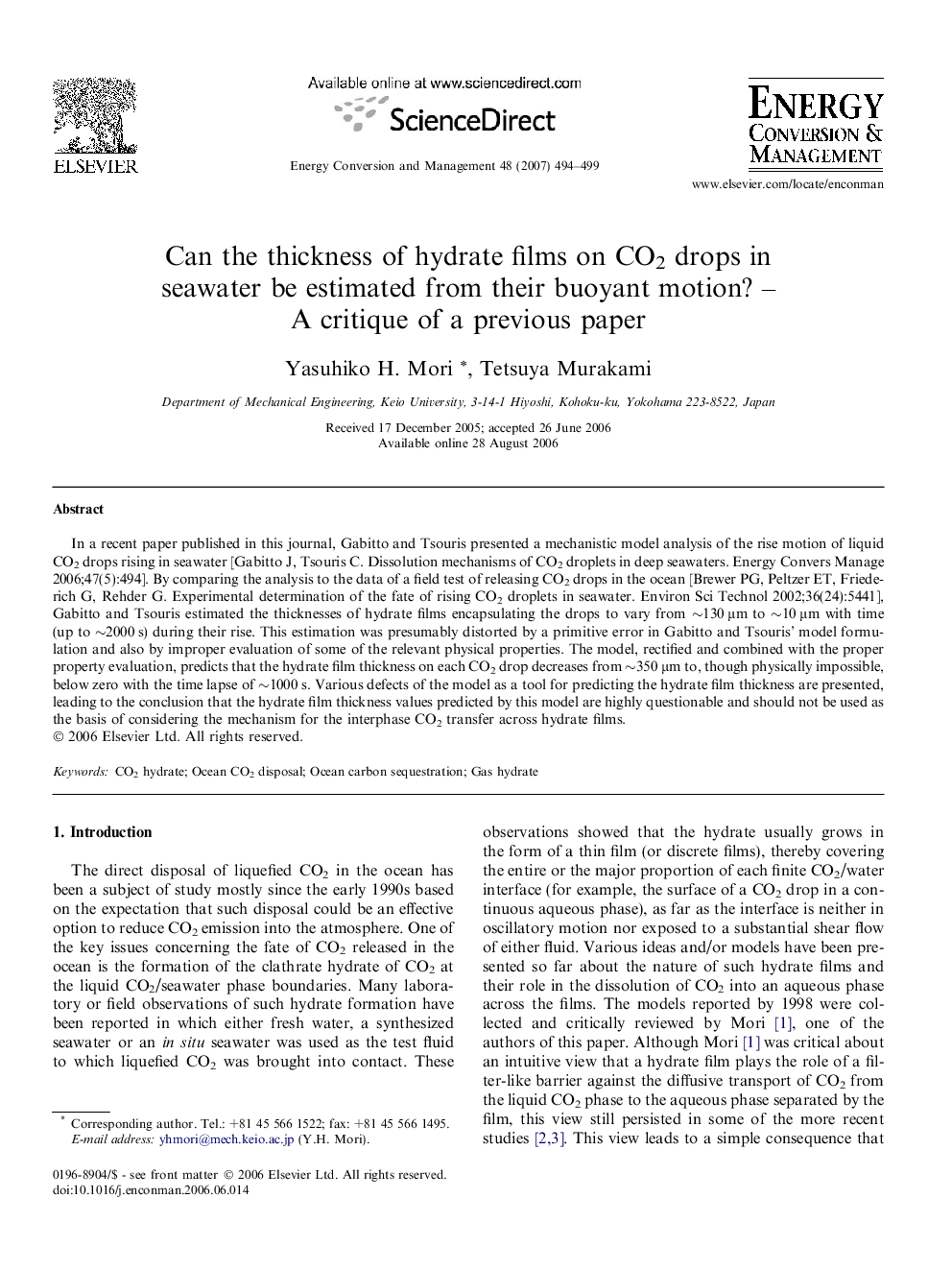| Article ID | Journal | Published Year | Pages | File Type |
|---|---|---|---|---|
| 773016 | Energy Conversion and Management | 2007 | 6 Pages |
Abstract
In a recent paper published in this journal, Gabitto and Tsouris presented a mechanistic model analysis of the rise motion of liquid CO2 drops rising in seawater [Gabitto J, Tsouris C. Dissolution mechanisms of CO2 droplets in deep seawaters. Energy Convers Manage 2006;47(5):494]. By comparing the analysis to the data of a field test of releasing CO2 drops in the ocean [Brewer PG, Peltzer ET, Friederich G, Rehder G. Experimental determination of the fate of rising CO2 droplets in seawater. Environ Sci Technol 2002;36(24):5441], Gabitto and Tsouris estimated the thicknesses of hydrate films encapsulating the drops to vary from â¼130 μm to â¼10 μm with time (up to â¼2000 s) during their rise. This estimation was presumably distorted by a primitive error in Gabitto and Tsouris' model formulation and also by improper evaluation of some of the relevant physical properties. The model, rectified and combined with the proper property evaluation, predicts that the hydrate film thickness on each CO2 drop decreases from â¼350 μm to, though physically impossible, below zero with the time lapse of â¼1000 s. Various defects of the model as a tool for predicting the hydrate film thickness are presented, leading to the conclusion that the hydrate film thickness values predicted by this model are highly questionable and should not be used as the basis of considering the mechanism for the interphase CO2 transfer across hydrate films.
Related Topics
Physical Sciences and Engineering
Energy
Energy (General)
Authors
Yasuhiko H. Mori, Tetsuya Murakami,
